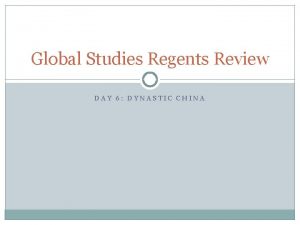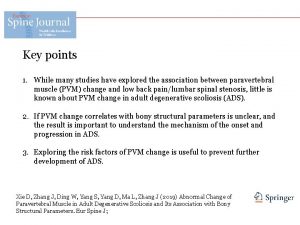Epidemiology Several studies have explored the epidemiology of







- Slides: 7

Epidemiology

Several studies have explored the epidemiology of erectile dysfunction by considering different settings and populations. Given that erectile dysfunction is regarded as a condition that is more prevalent in older men, two milestone studies have provided valuable results in this setting: the Massachusetts Male Ageing Study (MMAS) and the European Male Ageing Study (EMAS)7, 8.

The MMAS showed a combined prevalence of mild to moderate erectile dysfunction of 52% in men aged 40– 70 years; erectile dysfunction was strongly related to age, health status and emotional function 7. Conversely, the EMAS, the largest European multicentre population-based study of ageing men (40– 79 years), reported a prevalence of erectile dysfunction ranging from 6% to 64% depending on different age subgroups and increasing with age, with an average prevalence of 30% (REF. 8) (FIG. 2).

Few studies have evaluated erectile dysfunction prevalence worldwide 9– 12. What emerges from these studies is a systematically higher prevalence of erectile dysfunction in the United States and eastern and southeastern Asian countries than in Europe or South America. Several factors can account for these differences, including cultural or socioeconomic variables; however, further studies are required to identify and discriminate possible genetic influences from environmental impact. Data on erectile dysfunction incidence are less abundant; new cases range from 19 to 66 per 1, 000 men every year in studies in the United States, Brazil and the Netherlands 13– 15. However, these results are not robust owing to short follow-up duration, as well as heterogeneity of the ages and limited geographical locations of the participants.

Epidemiological data have indicated a strong association between erectile dysfunction and lower urinary tract symptoms (LUTS) in men with benign prostatic hyperplasia (BPH); LUTS are associated with urinary obstruction caused by benign enlargement of the prostate. This association is maintained even after adjusting for potential confounding factors, such as age and comorbid conditions 9, 15, 16. Both erectile dysfunction and LUTS in those with BPH have a high prevalence in ageing men and have common risk factors, such as hypertension and cardiovascular disorders, cigarette smoking, obesity, dyslipidaemia, diabetes mellitus, metabolic syndrome, stress, anxiety and depression 17.

Mechanisms/pathophysiology The penis remains in its flaccid state when the smooth muscle is contracted. The smooth muscle contraction is regulated by a combination of adrenergic (noradrenaline) control, intrinsic myogenic control and endothelium-derived contracting factors (prostaglandin and endothelins; FIG. 3)27– 29. Upon sexual stimulation, erection occurs after nitric oxide (NO) is released from non-adrenergic noncholinergic (NANC) nerve fibres and acetylcholine is released from parasympathetic cholinergic nerve fibres (FIG. 4); the result of the ensuing signalling pathways is increased cyclic GMP (c. GMP) concentrations, decreased intracellular Ca 2+ levels and smooth muscle cell relaxation 29, 30. As the smooth muscle relaxes, blood is able to fill the lacunar spaces in the corpora cavernosa, leading to compression of the subtunical venules, thereby blocking the venous outflow (veno-occlusion). The process is reversed as c. GMP is hydrolysed by phosphodiesterase type 5 (PDE 5)29, 30. Erectile dysfunction can occur when any of these processes is interrupted.














